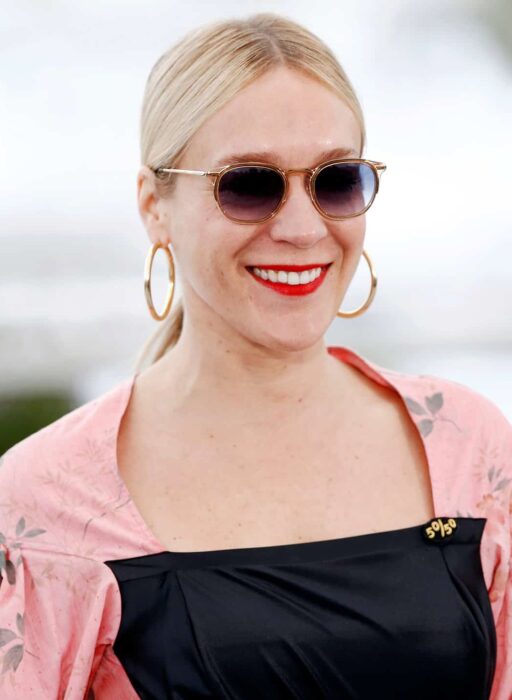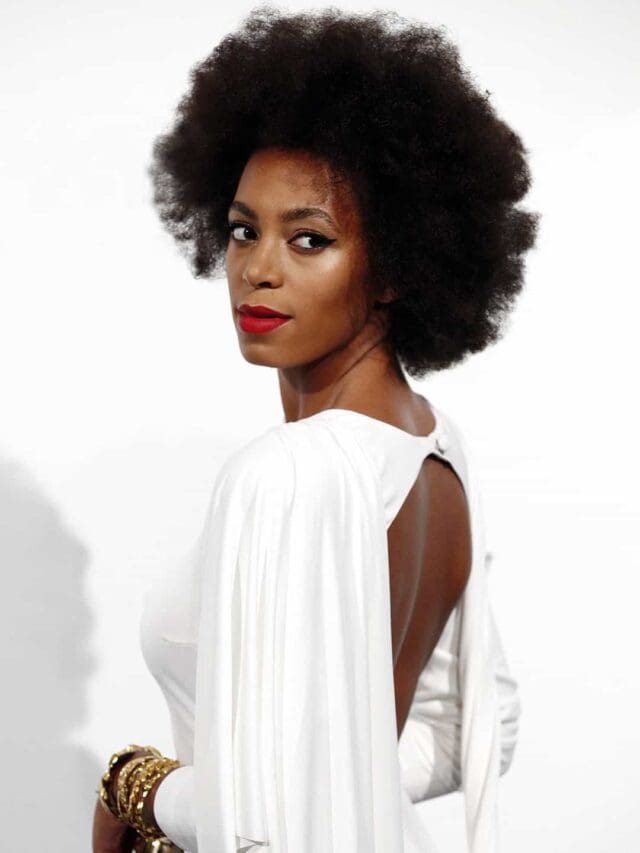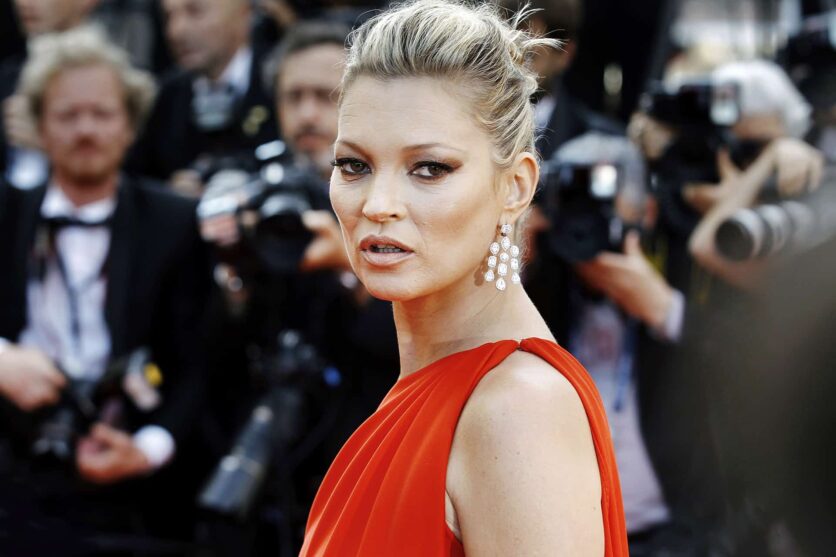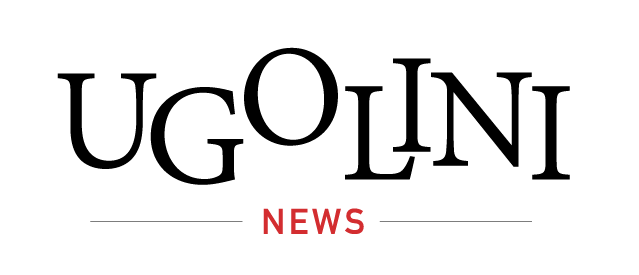
Last summer, Diet Coke announced a new creative director, but it wasn’t a marketing lead or advertising professional. The person in question had no notable experience in strategy, or indeed any meaningful affiliation with the world of business. Instead, their CV read: ‘really, really famous’. It was Kate Moss.
Back in 2021, there had been a similar appointment at luxury e-tailer FWRD, which bestowed the honorific on Kendall Jenner (‘model and reality TV star’, ‘274 million Instagram followers’). Shortly before that, fast fashion outlet Pretty Little Thing hired Molly-Mae Hague (‘Love Islander’, ‘7 million followers’) for the top spot.
Moss, Jenner and Hague weren’t the first celebrities to nab these coveted executive roles, however. The trend goes as far back as 2010, when Lady Gaga joined Polaroid. Alicia Keys became CD at Blackberry, and Justin Timberlake at Bud Light Platinum, in 2013, while Reese Witherspoon was named ‘storyteller-in-chief’ at Elizabeth Arden in 2017. The floodgates opened in 2020, when Jennifer Aniston, Emily Ratajkowski, Dakota Johnson and Cara Delevingne were enlisted at, respectively, supplements retailer Vital Proteins, face mask brand Loops Beauty, sexual wellness platform Maude, and sex toy company Lora Dicarlo. The following year, Cardi B, Drew Barrymore and A$AP Rocky were awarded senior positions at Playboy, Garnier and outfitter PacSun.
Why? Well, once upon a time, the life of a marketing manager was easy. If you wanted to sell a product, all you had to do was pay a celebrity to pose with it, and stick the image on billboards and in magazines. Maybe you got them to sign off on a quote: “I just love my ‘X’!” The consumer would see that Britney Spears liked Pepsi, or Brooke Shields wore Calvin Klein, and, like a good capitalist, go out and buy Pepsi and Calvin Klein.
Then, BAM, the internet and social media. Brands were suddenly able to sell people things from multiple angles at every minute of the day. Consumers, understandably, became more jaded and suspicious. Plus, the public now had unbridled access to celebrities’ lives via platforms like Instagram, so when they did try to sell something – a one-off and clearly money-motivated plug – it felt horribly inauthentic. Think the Kardashians reaching peak cynicism promoting dubious diet products that – with an army of personal chefs, trainers and cosmetic surgeons at their disposal – they had probably never touched. Consumers saw right through it.

Image: Shutterstock/Andrea Raffin
So, what to do? How to use celebrities to endorse your brand in a way that felt credible? The relationship had to be stronger and longer-term in order to convince consumers that their favourite influencer/actor/singer genuinely believed in the product. And how better to do that than to claim they even had a hand in creating it? Rather than chasing a temporary PR spike, forging a more permanent affiliation can transfer the trust of a fanbase to a brand over time.
There’s just one problem with these celebrity appointments: it’s not really fair, is it? They’ve taken the opportunity away, presumably, from someone who deserves it – someone who has worked tirelessly for the chance to achieve what Hague has been given at the ripe age of 22, largely by virtue of appearing on a reality dating show for six weeks. (Which makes her infamous “same 24 hours in the day” comments, where she implied that everyone is similarly equipped to succeed as long as you’re willing to work for it, all the more jarring.)

Image: Shutterstock/Andrea Raffin

Image: Shutterstock/Andrea Raffin
Plus, appointing a celebrity to a role traditionally reserved for those at the top of their field necessarily begs the question, how much can they realistically contribute? What exactly are they doing to earn that, in Hague’s case, seven-figure paycheque?
When PLT recruited the Love Island runner-up, it released a statement explaining that she would be giving her “input in terms of creative campaigns, signing new brand ambassadors and working on her own collections”. According to FWRD, Jenner’s responsibilities are quite extensive, including overseeing the “look and feel of the site, curation of brands sold on the site, monthly edits of must-have trends, styles, and looks, as well as marketing ideas, brand partnerships, and brand activations”. I could be wrong, but I can’t exactly see Hague or Jenner clocking in from 9-5 or sweating over deadlines.
Which isn’t to say that some celebrity creative directors don’t bring something tangible (other than visibility) to the table. Take, for example, Chloe Sevigny’s tenure at Opening Ceremony. She’s been affiliated with the brand for over a decade and her input has resulted in numerous home runs for OC. When Solange became a creative consultant for Puma, the first thing she did was bring three of her favourite designers (Gerlan Jeans, William Okpo, and Hisham Bharoocha) together for a knock-out collection.

Image: Shutterstock/Andrea Raffin
But one has to assume that these are the exceptions rather than the rule. When Will.i.am of the Black Eyed Peas was appointed director of creative innovation at tech company Intel, receiving his own company badge and pledging to show up in the office at least 60 days per year, it felt like a monumental gimmick. Similarly, what can Moss realistically bring to a boardroom meeting about promoting a soft drink? (Details of her role were notably thin on the ground, with the model announcing that she was “looking forward to inspiring fans and celebrating the brand’s 40th birthday in style”, whatever that means). It’s fair to say that celebrity appointments can often be tokenistic; ironically, a stab at transparent marketing that becomes just another deception.
Herein lies the pitfall of the celebrity creative director strategy. Unless there is a clear reason for the star in question to receive their position, the appointments are still seen by many as sponsored endorsement, just on a larger scale.
That said, don’t expect companies to stop handing out lofty titles any time soon, because, by and large, it works. Search interest in FWRD skyrocketed on Google Trends the day the news of the Jenner partnership went live. When Rihanna’s first branded Puma trainers (she was appointed CD of womenswear in 2014) were launched, they sold out in just 35 minutes. Beyoncé also proved to have the Midas touch when Adidas bought a 50 per cent stake in her athleisure label Ivy Park, naming her a creative partner in the process.
Celebrity appointments are simply the next iteration of ad campaigns and sponsored content, albeit with the added suggestion of involvement and/or input. But the power of celebrity cannot be denied, and brands will forever find new ways to harness it.
Read more: The best February birthstone jewellery
The post The rise of the celebrity creative director: Why are stars getting the top spot? appeared first on Luxury London.
